Thinking about relocating? Living in Italy is a dream that appeals to many—whether it’s for the art, the food, the slower pace, or just a change of scenery. From lively city centers to quiet villages surrounded by olive trees, there’s no shortage of places that feel like they were made for a fresh start.
This guide walks you through it all. We’ll cover how to choose the best places to live in Italy, what life is really like in each region, and what you need to know about visas, taxes, costs, and settling in as an expat.
Continue reading to find:
Top 10 Best Places to Live in Italy in 2025
1. Rome
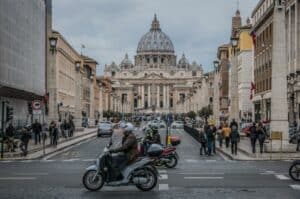
- Population: Approximately 2.8 million
- Climate: Mediterranean; hot, dry summers and mild, wet winters
- Airport Proximity: Leonardo da Vinci International Airport (Fiumicino) is about 30 km from the city center
- Ideal For: Professionals, digital nomads, history enthusiasts
Why It’s Great
Rome offers rich historical sites, a vibrant culture, and a dynamic job market. The city is a hub for international businesses and organizations, making it attractive for professionals and digital nomads. English speakers will find a supportive expat community, though learning Italian can enhance the experience.
Cost of Living & Housing
The cost of living in Rome is relatively high compared to other Italian cities. A single person can expect monthly expenses between €2,100 and €2,500, including rent. Rent for a one-bedroom apartment in the city center averages around €1,000 to €1,500 per month.
Cultural or Lifestyle Highlights
Rome is home to iconic landmarks like the Colosseum, Vatican City, and the Pantheon. It also has a lively arts scene, numerous museums, and a culinary scene celebrated worldwide.
2. Milan
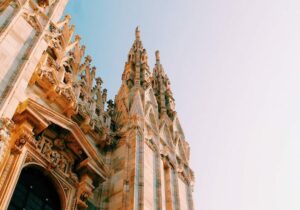
- Population: Approximately 1.4 million
- Climate: Humid subtropical; hot, humid summers and cold, foggy winters
- Airport Proximity: Malpensa International Airport is about 50 km from the city center
- Ideal For: Young professionals, entrepreneurs, fashion and design enthusiasts
Why It’s Great
Milan is Italy’s financial and fashion capital. It offers great career opportunities, especially in the finance, design, and technology sectors. The city has a cosmopolitan atmosphere and a significant international community.
Cost of Living & Housing
Milan has a higher cost of living compared to other Italian cities. A single person’s monthly expenses, excluding rent, are approximately €1,030. Rent for a one-bedroom apartment in the city center averages around €1,200 to €1,500 per month.
Cultural or Lifestyle Highlights
Milan is renowned for its fashion scene, art galleries, and historical sites, such as the Duomo di Milano. The city offers vibrant nightlife and diverse dining options and hosts numerous international events and exhibitions.
3. Bologna
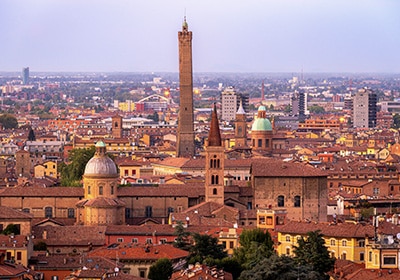
- Population: Approximately 390,000
- Climate: Humid subtropical; hot summers and cool, damp winters
- Airport Proximity: Bologna Guglielmo Marconi Airport is about 6 km from the city center
- Ideal For: Families, students, entrepreneurs
Why It’s Great
Bologna is known for its high quality of life, esteemed educational institutions, and a strong sense of community. The city is home to the University of Bologna, the oldest university in the world, with a vibrant student population and innovative environment.
Cost of Living & Housing
The cost of living in Bologna is moderate. A single person’s monthly expenses, excluding rent, are approximately €800. Rent for a one-bedroom apartment in the city center averages around €850 to €1,000 per month.
Cultural or Lifestyle Highlights
Bologna has a rich culinary tradition, famous for dishes like tagliatelle al ragù. The city features well-preserved medieval architecture, extensive porticoes, and a lively cultural scene with numerous festivals and events throughout the year.
4. Florence
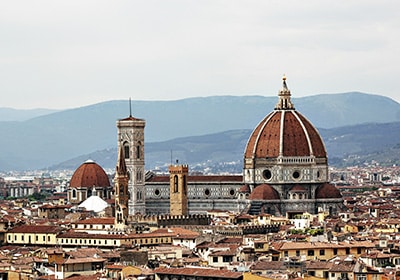
- Population: Approximately 370,000
- Climate: Humid subtropical; hot summers and cool, wet winters
- Airport Proximity: Florence Airport (Peretola) is about 5 km from the city center
- Ideal For: Artists, retirees, cultural enthusiasts
Why It’s Great
Florence, the birthplace of the Renaissance, offers an unmatched cultural experience. The city has a strong expat community and is known for its art, history, and architecture.
Cost of Living & Housing
The cost of living in Florence is moderate to high. A single person’s monthly expenses, excluding rent, are approximately €900. Rent for a one-bedroom apartment in the city center averages around €900 to €1,200 per month.
Cultural or Lifestyle Highlights
Florence is home to world-renowned museums like the Uffizi Gallery and landmarks like the Florence Cathedral. The city offers a lively arts scene, exquisite Renaissance architecture, and a high concentration of historical sites that attract tourists and long-term residents.
5. Turin
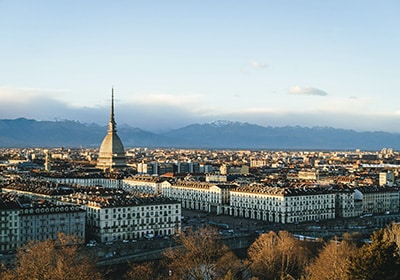
- Population: Approximately 870,000
- Climate: Continental; cold winters and hot summers
- Airport Proximity: Turin Airport (Caselle) is about 16 km from the city center
- Ideal For: Families, professionals, students
Why It’s Great
Turin is renowned for its rich cultural heritage, excellent public services, and thriving technology and innovation sector. The city offers a high quality of life at a lower cost of living than other major Italian cities.
Cost of Living & Housing
Turin is among the more affordable large cities in Italy. The estimated monthly costs for a family of four are approximately €3,143, excluding rent, while a single person’s estimated monthly costs are around €1,475, excluding rent. Rent for a one-bedroom apartment in the city center averages around €700 per month.
Cultural or Lifestyle Highlights
Turin’s cultural scene has numerous museums, art galleries, and theaters. The city is also known for its culinary delights, including chocolate and coffee specialties. Its proximity to the Alps offers opportunities for outdoor activities like skiing and hiking.
6. Parma
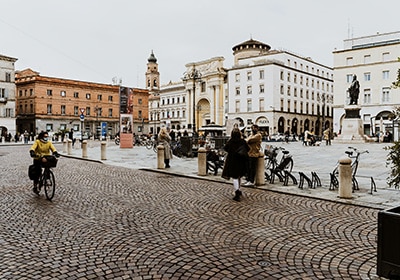
- Population: Approximately 197,000
- Climate: Humid subtropical; hot summers and cold, damp winters
- Airport Proximity: Parma Airport is about 5 km from the city center
- Ideal For: Families, retirees, food enthusiasts
Why It’s Great
Parma is celebrated for its rich cultural heritage, excellent cuisine, and high quality of life. The city offers a relaxed atmosphere with a strong sense of community, making it ideal for families and retirees.
Cost of Living & Housing
Parma has a moderate cost of living. The estimated monthly costs for a family of four are approximately €3,395, excluding rent, while a single person’s estimated monthly costs are around €1,468, excluding rent. Housing costs are reasonable, with a one-bedroom apartment in the city center averaging around €600 to €800 per month.
Cultural or Lifestyle Highlights
Parma is renowned for its culinary contributions, notably Parmigiano Reggiano cheese and Prosciutto di Parma. The city also boasts a vibrant arts scene, with numerous theaters, museums, and music festivals.
7. Naples
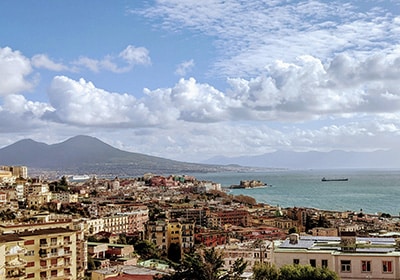
- Population: Approximately 950,000
- Climate: Mediterranean; hot, dry summers and mild, wet winters
- Airport Proximity: Naples International Airport is about 7 km from the city center
- Ideal For: Young adults, creatives, food lovers
Why It’s Great
Naples offers a rich history, vibrant street life, and a strong sense of community. The city’s coastal location provides stunning views and access to beautiful beaches. Naples is also known for its culinary scene, being the birthplace of pizza.
Cost of Living & Housing
Naples has a lower cost of living compared to northern Italian cities. The average cost of living index is about 56.2, taking into account common expenses such as housing, food, and transportation. Housing is affordable, with a one-bedroom apartment in the city center averaging around €600 per month.
Cultural or Lifestyle Highlights
Naples is rich in cultural heritage, with numerous historical sites, museums, and art galleries. The city offers a lively nightlife, bustling markets, and a renowned food culture.
8. Bari
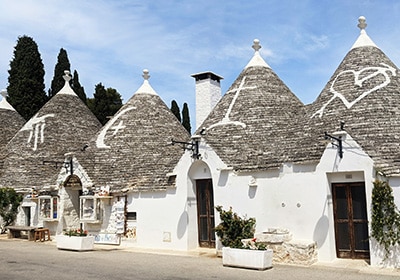
- Population: Approximately 320,000
- Climate: Mediterranean; hot summers and mild winters
- Airport Proximity: Bari Karol Wojtyła Airport is about 11 km from the city center
- Ideal For: Families, retirees, beach enthusiasts
Why It’s Great
Bari is a busy port city with a charming old town and a growing expat community. Its location on the Adriatic Sea offers beautiful coastal views and access to beaches. The city has a relaxed atmosphere blending modern and traditional Italian lifestyles.
Cost of Living & Housing
The estimated monthly costs for a family of four are approximately €2,875, excluding rent, while a single person’s estimated monthly costs are around €1,270, excluding rent. Housing is affordable, with a one-bedroom apartment in the city center averaging around €500 per month.
Cultural or Lifestyle Highlights
The city’s Old Town (Bari Vecchia) is a maze of narrow alleys lined with traditional bakeries, medieval churches, and vibrant piazzas. Its waterfront promenade offers scenic views of the Adriatic Sea, while modern shopping districts and universities attract young professionals and students. Bari is also known for its lively festivals, seafood cuisine, and strong regional traditions.
9. Cagliari
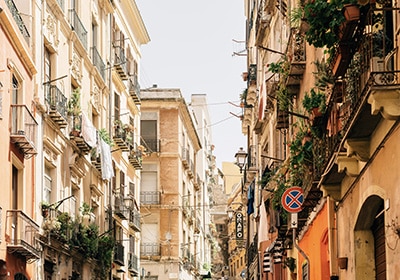
- Population: ~150,000
- Climate: Mediterranean; long hot summers, mild winters
- Airport Proximity: Cagliari Elmas Airport is about 7 km from the city center
- Ideal For: Retirees, remote workers, beach lovers, digital nomads
Why It’s Great
Cagliari, the capital of Sardinia, offers island living with mainland convenience. It’s a compact, walkable city where you can enjoy the beach after work and fresh seafood every evening. It also has a steadily growing community of digital nomads and remote workers.
Cost of Living & Housing
A single person’s monthly living costs average around €1,100, excluding rent. Rent for a one-bedroom apartment in the city center typically ranges from €500 to €700 per month, with lower prices in suburban or coastal districts nearby. Property is still relatively affordable, making it a strategic place for buying property in Italy.
Cultural or Lifestyle Highlights
Cagliari boasts a laid-back island atmosphere with beautiful beaches like Poetto, a charming old town (Castello), and a thriving local food scene.
10. Lake Como
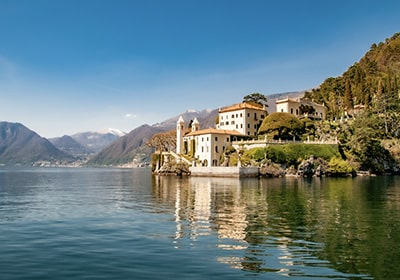
- Population: ~85,000 (Como town)
- Climate: Humid subtropical; warm summers, cool winters
- Airport Proximity: Milan Malpensa Airport is about 52 km from the city center
- Ideal For: Luxury seekers, retirees, second-home buyers, professionals with flexible incomes
Why It’s Great
Lake Como is one of Italy’s most iconic destinations, offering peaceful living with breathtaking views, refined elegance, and high-end amenities. Its proximity to Milan makes it especially attractive to professionals and retirees looking for quiet luxury just an hour from a major metropolis.
Cost of Living & Housing
Rent for a one-bedroom apartment with a lake view in towns like Bellagio or Varenna can exceed €1,200 per month, while less touristy towns such as Lecco offer more affordability. Overall, living costs are higher due to tourism-driven demand.
Cultural or Lifestyle Highlights
The area is surrounded by mountains, historic villas, and small, picturesque towns. From Michelin-starred dining to peaceful lakeside cafes, it’s ideal for those seeking a balanced lifestyle of quality and tranquility.
Best Coastal Places to Live in Italy
Positano
Perched on the cliffs of southern Italy’s Amalfi Coast, Positano is one of the most visually stunning coastal towns in the world. Known for its pastel buildings, boutique hotels, and high-end living, Positano caters to those who value exclusivity and beauty.
Ideal For: Luxury seekers, artists, retirees
Highlights: Breathtaking views, fine dining, designer shopping
Drawbacks: High cost of living, seasonal crowds, limited accessibility
Genoa
Located in northern Italy’s Liguria region, Genoa is a maritime powerhouse with a rich history and an active seaport. It offers a more urban coastal lifestyle with access to excellent infrastructure and cultural attractions.
Ideal For: Professionals, expats, history buffs
Highlights: Affordable housing, strong transport links, art and architecture
Drawbacks: Industrial zones, variable cleanliness in some districts
Rimini
Rimini, along the Adriatic coast, offers wide sandy beaches, vibrant nightlife, and a welcoming atmosphere. It’s a favorite among young Italians and increasingly popular with expats seeking affordable seaside living.
Ideal For: Young adults, digital nomads, seasonal residents
Highlights: Affordable rent, energetic social scene, beach life
Drawbacks: Less international diversity, seasonal business fluctuations
Palermo
Palermo, the capital of Sicily, is a vibrant coastal city blending Arab-Norman architecture with delicious cuisine and a deep sense of tradition. It’s one of the best affordable places to live in Italy by the sea.
Ideal For: Budget-conscious expats, retirees, culture lovers
Highlights: Markets, history, warm winters, access to beaches
Drawbacks: Bureaucracy, petty crime, slower public services
Venice
Venice offers one of the most distinctive coastal experiences in the world. Living in this floating city means navigating daily life by boat, absorbing centuries of history, and participating in a unique local culture.
Ideal For: Artists, romantics, cultural purists
Highlights: No cars, rich history, strong sense of place
Drawbacks: High maintenance housing, tourist congestion, rising tides
How to Choose the Best Place to Live in Italy
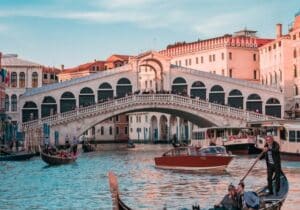
Do you prefer a slower pace in the countryside or the energy of a city center? Italy offers both. From making Italian friends in close-knit rural areas to joining expat networks in urban hubs like Milan or Rome, the local culture and sense of community vary widely by location.
Budget & cost of living
Northern Italy generally has a higher cost of living compared to the more affordable towns and rural areas in southern Italy. While Milan and Florence offer access to high-paying jobs and cultural amenities, places like Bari and Palermo provide a lower cost without compromising on quality.
Language & communication
While many Italians speak English in larger cities, learning Italian is essential for deeper integration—especially in smaller towns. Speaking the Italian language opens doors to social connections and everyday conveniences.
North vs. South, urban vs. rural
Northern Italy offers better infrastructure, business hubs, and access to the Alps, while southern Italy boasts natural beauty, crystal clear waters, and a slower pace. Urban centers come with more amenities and job options, while rural areas promise clean air, space, and tranquility.
How to Move to Italy
Living in Italy is possible through several residency pathways, including the Italy Golden Visa, Elective Residency Visa, and citizenship by investment options. Expats should also consider buying property in Italy as part of their long-term relocation strategy.
1. Italy Digital Nomad Visa
Italy’s Digital Nomad Visa allows non-EU remote workers and freelancers to live in Italy for up to one year. Applicants must earn at least €28,000 annually, have health insurance, proof of accommodation, and a clean criminal record. It’s ideal for professionals working for companies outside Italy.
2. Italy Elective Residency Visa (ERV)
The Elective Residency Visa Italy is perfect for retirees and financially independent individuals, this visa lets you live in Italy without working. You’ll need regular passive income, long-term housing, and private health insurance. Employment is not permitted under this visa.
3. Italy Golden Visa (Investor Visa)
The Italy Golden Visa suits high-net-worth individuals investing in Italy. Eligible investments include €250K+ in startups, €500K+ in Italian companies, or €2M in government bonds. It offers a renewable residency and a path to citizenship after 10 years.
4. Citizenship by Descent or Marriage
If you have Italian ancestry, you may qualify for Italian Citizen by Decent (jure sanguinis). Spouses of Italian citizens can apply after 2 years of marriage (or 1.5 years if you have children), provided you live in Italy.
Living in Italy: Pros and Cons
Aspect | Pros | Cons |
Lifestyle | La dolce vita: relaxed pace, amazing food, stunning scenery | Slower processes, especially in rural areas |
Cost of Living | Affordable in many towns and rural areas, especially in the south | Higher in cities like Milan, Rome, and Florence |
Healthcare | Universal healthcare system with low costs and good quality | Long wait times in public facilities; private care adds extra cost |
Transport | Extensive train network, especially in the north | Public transport in small towns can be unreliable |
Bureaucracy | Italy is improving digital access to services | Complicated paperwork and slow administration remain common issues |
Safety | Low violent crime; safe for families and expats | Some regions may have higher petty crime or organized crime concerns |
Culture & History | Rich in historical sites, art, festivals, and traditional values | Language barrier can make integration harder if you don't speak Italian |
Weather | Mild winters and warm summers in most regions | Hot, humid summers in the south; foggy winters in the north |
Frequently Asked Questions about the Best Places to Live in Italy
Can foreigners buy property in Italy?
Yes, non-EU citizens can buy property in Italy, although some countries have reciprocity agreements that must be met. There are no restrictions for EU/EEA citizens. Foreigners often choose property in Tuscany, Lake Como, and Puglia for holiday homes or relocation.
What is the average rent in Italy by city?
Rental prices vary widely:
- Rome: €1,000–€1,500/month (1-bedroom in center)
- Milan: €1,200–€1,600/month
- Florence: €900–€1,200/month
- Bari/Turin/Palermo: €450–€800/month
What’s the best time of year to move to Italy?
Spring (April–June) and early fall (September–October) are ideal. The weather is mild, the rental market is active, and you avoid the summer heat and peak tourist season.
Do most Italians speak English?
In major cities and tourist destinations, many Italians, especially younger generations, speak English. However, in rural areas and smaller towns, speaking Italian is essential for day-to-day life.
How do utilities and internet costs compare in Italy?
A standard apartment’s monthly utility costs (electricity, heating, water, water, garbage) range from €100–€200. High-speed internet typically costs €25–€40/month.
What are some challenges of living in rural Italy?
While rural areas offer affordability and charm, challenges include:
- Limited public transport
- Fewer English speakers
- Slower internet in remote zones
- Fewer job opportunities
Can I bring pets to Italy when I relocate?
Yes, you can bring pets. Dogs and cats require microchips, rabies vaccinations, and a health certificate issued within 10 days of travel. EU Pet Passports are accepted if you are relocating from another EU country.
How does schooling work for expat children in Italy?
Italy has free public schooling, but instruction is in Italian. Italian international schools (especially in Rome, Milan, and Florence) offer English, French, or German curricula, but they can be expensive.
Are there cultural differences expats should be aware of?
Yes. Punctuality is flexible, bureaucracy is slow, social relationships are key, and lunch breaks are sacred. Understanding these cultural nuances helps ease daily life and integration.
How long can I stay in Italy without a visa?
Citizens of Schengen and many visa-exempt countries (e.g., USA, Canada, Australia) can stay up to 90 days within a 180-day period for tourism. Stays beyond this require a valid visa or residence permit.

 Gizane Campos
Gizane Campos 

